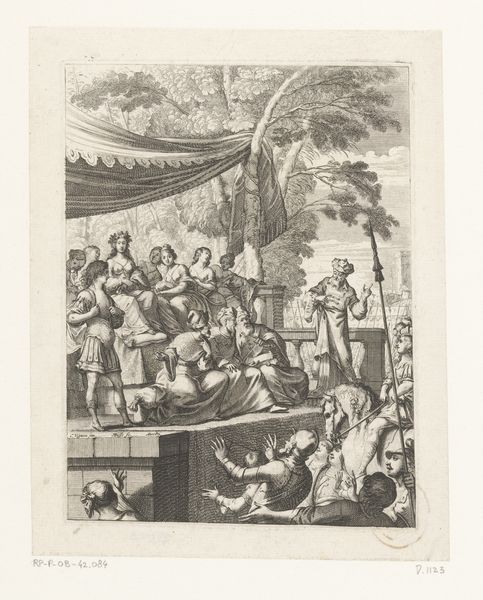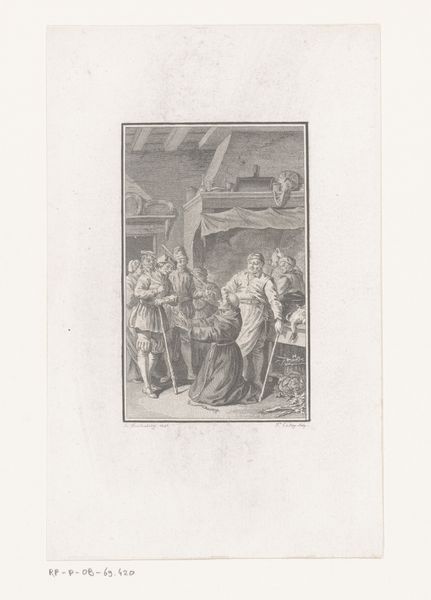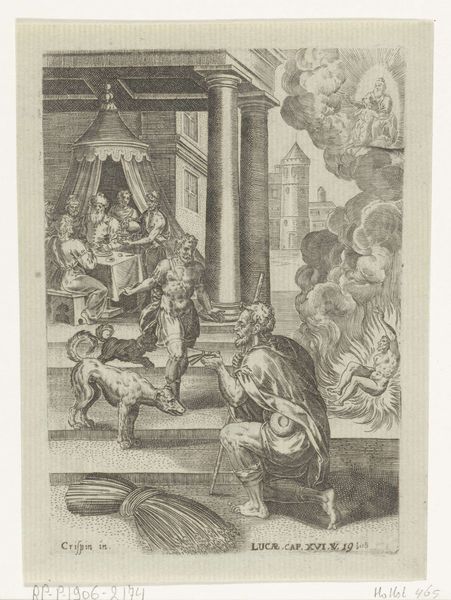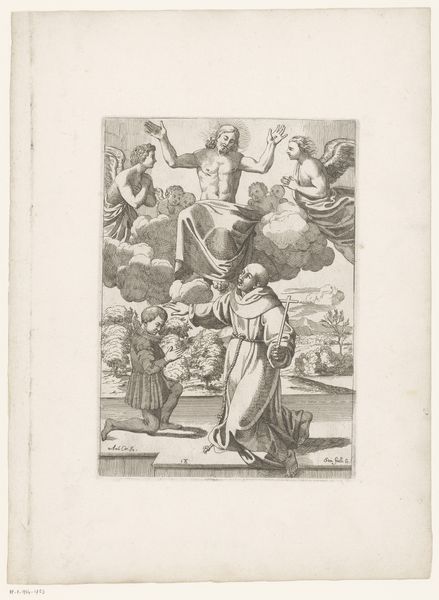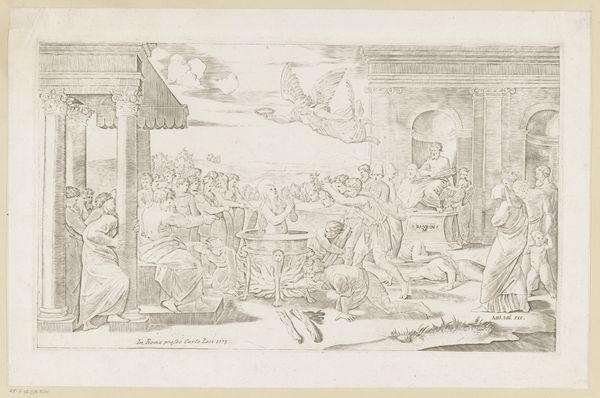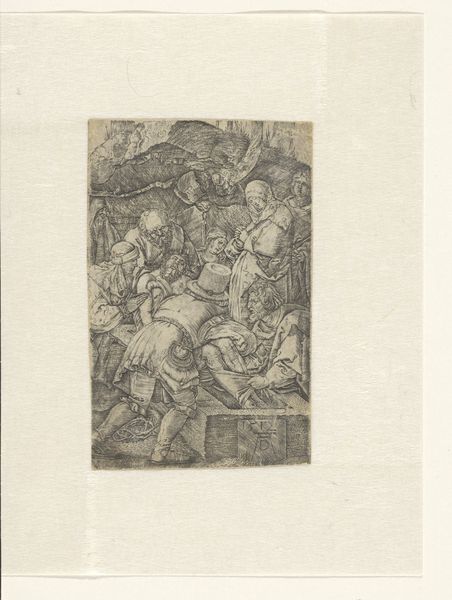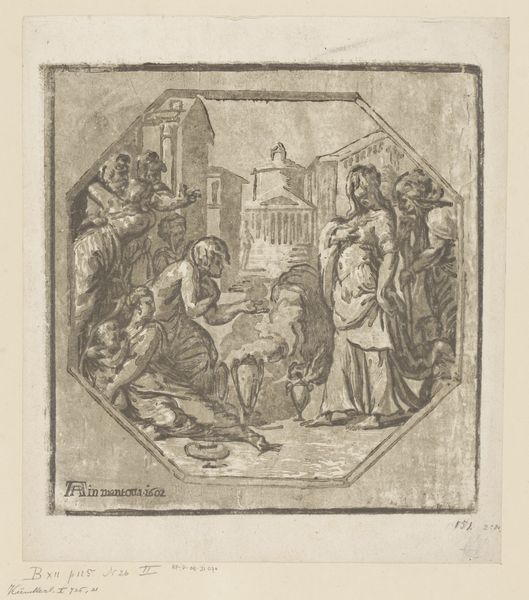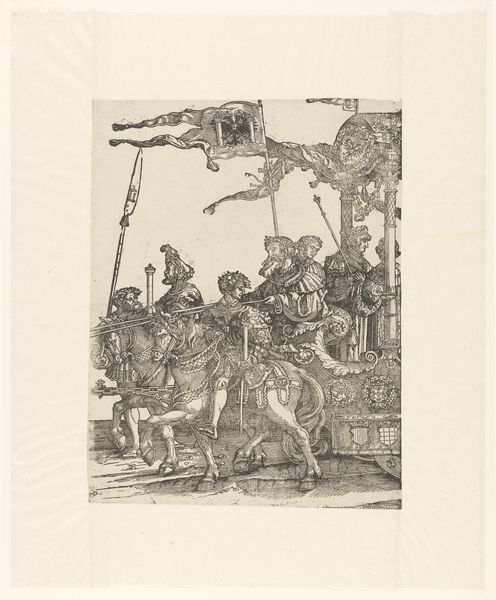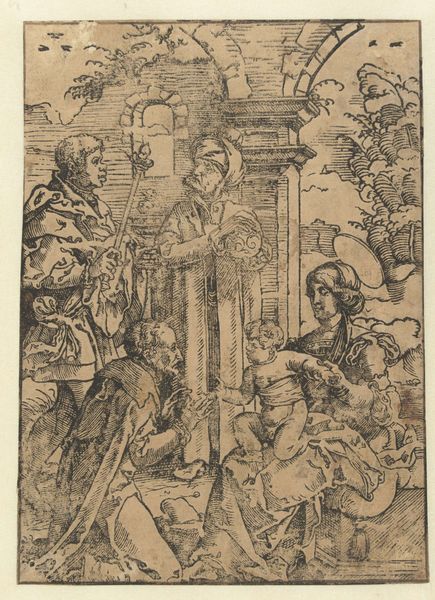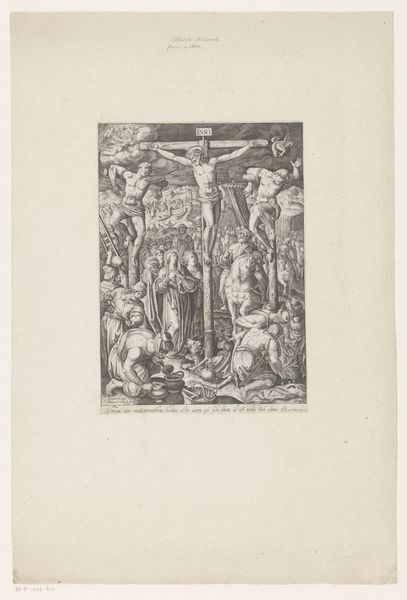
print, etching
#
narrative-art
#
baroque
# print
#
etching
#
old engraving style
#
traditional media
#
landscape
#
figuration
#
personal sketchbook
#
line
#
genre-painting
Dimensions: height 145 mm, width 96 mm
Copyright: Rijks Museum: Open Domain
Curator: Let's turn our attention to "Tempelplein met mannen, links een gevecht voor een herberg," or "Temple Square with Men, with a Fight in Front of an Inn on the Left", an etching by Daniel Rabel dating from between 1588 and 1637. Editor: Immediately, I'm struck by the stark contrast. On one side, a chaotic brawl; on the other, an almost solemn gathering. The texture in this piece is remarkable, for a simple etching. Curator: It's fascinating, isn't it? Rabel captures both the mundane and the elevated. The public square setting was very popular for genre scenes depicting social life at the time, allowing viewers insight into daily rituals. Consider the role of inns and temples in mediating social conduct. Editor: Absolutely. And what about the physical creation? You can practically feel the hand of the artist meticulously scratching away at the plate. Note the fine detail achieved in depicting the clothing, the gestures…the line work is superb! I can see a skilled artisan taking pride in producing what would have been an accessible print for mass consumption. Curator: Exactly. The printmaking process made this scene accessible to a wide audience, far beyond the wealthy patrons of the era. Rabel masterfully employed the medium to engage social dynamics through an easily distributed object. Consider, for instance, the subtle gestures and body language on display. What social norms are at play, and how does he depict them? Editor: Yes, and if you consider the social context in which prints like these circulated, you can imagine them adorning the walls of ordinary homes or serving as illustrations in popular books. The materials are cheap, paper and ink. This expands art beyond the wealthy elite, becoming part of popular culture. How do you think these images impacted social norms, what meanings did the viewers take? Curator: Perhaps Rabel wanted his art to engage more people beyond traditional art viewers. His artistic interventions democratized certain modes of representation while reflecting, and maybe even challenging, contemporary ideas about conduct and morality. Editor: Indeed. It encourages me to see value in art beyond just aesthetic value or high cultural value, especially looking into everyday life like Rabel's print here. Curator: It is this intersection of artistry and accessibility, combined with its ability to document a crucial time period, that cements its position as a thought-provoking piece in this gallery. Editor: Precisely, I am seeing both artist and material culture here.
Comments
No comments
Be the first to comment and join the conversation on the ultimate creative platform.
